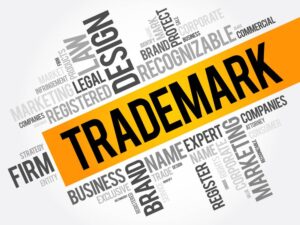If you’re planning to register your brand, one crucial question you must ask is: “How many trademark classes are there?” This isn’t just a technicality — it’s one of the most important parts of protecting your brand’s identity. Whether you’re a startup founder, creative entrepreneur, or compliance expert, knowing the classes that apply to your goods or services can make or break your registration process.

In this guide, we’ll explore:
-
What trademark classes are
-
How many trademark classes are there
-
Descriptions of all classes
-
Why choosing the right class matters
Let’s dive in.
What Are Trademark Classes?
Trademark classes are categories of goods and services under which a brand name, logo, slogan, or any identifying mark can be registered. These classes come from an international framework called the Nice Classification (NCL) — adopted in 1957 and updated annually by the World Intellectual Property Organization (WIPO).
How Many Trademark Classes Are There?
There are 45 trademark classes in total:
-
Classes 1–34 cover physical goods
-
Classes 35–45 cover services
Knowing how many trademark classes there are helps you register your trademark under the appropriate category for your business. You can also register under multiple classes if your brand covers different types of products or services.
List of All 45 Trademark Classes and Their Descriptions
Goods (Classes 1–34)
-
Class 1 – Chemicals used in industry and science
-
Class 2 – Paints, varnishes, lacquers
-
Class 3 – Cosmetics and cleaning products
-
Class 4 – Industrial oils and greases; fuels
-
Class 5 – Pharmaceuticals and other medical products
-
Class 6 – Common metals and metal building materials
-
Class 7 – Machines and machine tools
-
Class 8 – Hand tools and implements
-
Class 9 – Electronics, software, computers
-
Class 10 – Medical instruments and apparatus
-
Class 11 – Lighting, heating, cooking appliances
-
Class 12 – Vehicles and transport equipment
-
Class 13 – Firearms, explosives, ammunition
-
Class 14 – Jewelry, watches, precious metals
-
Class 15 – Musical instruments
-
Class 16 – Paper goods, stationery, office supplies
-
Class 17 – Rubber, plastics, packing materials
-
Class 18 – Leather goods, bags, luggage
-
Class 19 – Non-metallic building materials
-
Class 20 – Furniture and furnishings
-
Class 21 – Household utensils, kitchenware
-
Class 22 – Ropes, nets, tents, tarpaulins
-
Class 23 – Yarns and threads for textiles
-
Class 24 – Textiles and textile goods
-
Class 25 – Clothing, footwear, headgear
-
Class 26 – Lace, embroidery, ribbons, buttons
-
Class 27 – Carpets, rugs, mats, linoleum
-
Class 28 – Toys, games, sporting goods
-
Class 29 – Meat, fish, poultry, dairy, preserved foods
-
Class 30 – Coffee, tea, rice, spices, baked goods
-
Class 31 – Agricultural and horticultural products
-
Class 32 – Beers, mineral waters, soft drinks
-
Class 33 – Alcoholic beverages (excluding beer)
-
Class 34 – Tobacco and related products
Services (Classes 35–45)
-
Class 35 – Advertising, business management, marketing
-
Class 36 – Insurance, banking, real estate
-
Class 37 – Construction, repair, installation services
-
Class 38 – Telecommunications and broadcasting
-
Class 39 – Transport, storage, travel arrangement
-
Class 40 – Treatment of materials, custom manufacturing
-
Class 41 – Education, training, entertainment
-
Class 42 – Technology, scientific research, IT services
-
Class 43 – Hospitality, food and drink services
-
Class 44 – Medical, beauty, and agricultural services
-
Class 45 – Legal services, security, personal services
See Also: The Functions of the Corporate Affairs Commission in Business Registrations and Corporate Governance
Why Trademark Classes Matter
You’re probably still thinking, “How many trademark classes are there and why should I care?”
Here’s why it matters:
-
Legal Scope: Your trademark protection only applies to the class(es) you register under. If someone else registers a similar name in a different class, there may be no conflict unless there’s a likelihood of confusion.
-
Business Focus: Choosing the right class ensures you’re not wasting money or registering in irrelevant categories.
-
Cost: Each class attracts its own registration fee. If you register for three classes, you pay for all three.
-
Avoiding Rejection: If you file under the wrong class, your application might be rejected or delayed.
🧠 Final Thoughts: Know Before You File
So, how many trademark classes are there? The answer is 45 — and picking the right one(s) is essential for brand protection. Registering a trademark isn’t just a formality; it’s a legal process that defines the boundary of your brand’s identity.
Before submitting your application, take time to review the full list above. Better still, consult a trademark expert or legal advisor who can guide you on which classes apply to your product or service.
Need help choosing your classes or filing your application? Let’s talk.
